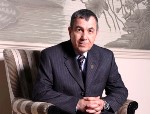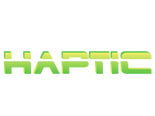Theme: New Scientific Innovations in Development of Tissue science and Biobanking Technologies
Biobanking 2017
Conferenceseries LLC Ltd invites all the participants from all over the world to attend “3rd International Conference & Exhibition on Tissue Preservation and Biobanking” during August 23-24, 2017 in San Francisco, California, USA which includes prompt keynote presentations, Oral talks, Poster presentations and Exhibitions.
Biobanking-2017 on behalf of its organizing Committee welcomes all the stem cell technologists, researchers, industrialists, young scientists as well as student and corporate delegates to participate and to have a great experience. The theme of the conference of Biobanking is based on “New Scientifical Innovations in Development of Tissue science and Biobanking Technologies”. During Biobanking conferences, the International symposiums, B2B meetings, international workshops will also be organized to discuss the specific topics in the field of Stem cell technology. The conference also welcomes International exhibitions form corporate sectors to showcase the recent advancements in the tools and techniques. The conference also welcomes International exhibitions form corporate sectors to showcase the recent advancements in tools and techniques.
Why to attend???
With members from around the world focused on learning about Biobanking and its advances; this is your best opportunity to reach the largest assemblage of participants from the Tissue preservation and Biobanking community. Conduct presentations, distribute information, meet with current and potential scientists, make a splash with new drug developments, and receive name recognition at this 2-day event. World-renowned speakers, the most recent techniques, developments, and the newest updates in Biobanking are hallmarks of this conference.
Target Audience:
- Biobanking Researchers
- Biobanking Faculty
- Medical Colleges
- Biobanking Associations and Societies
- Business Entrepreneurs
- Training Institutes
- Cryo storage Companies
- Data Management Companies
- Global Biobanking Companies
- Biobanking investors
The developing field of tissue engineering aims to regenerate damaged tissues by combining cells from the body with bioresorbable materials, biodegradable hydrogel, biomimetic materials, nanostructures and nanomaterials, biomaterials and tissue implants which act as templates for tissue regeneration, to guide the growth of new tissue by using with the technologies. The global market for biomaterials, nanostructures and bioresorbable materials are estimated to reach $88.4 billion by 2017 from $44.0 billion in 2012 growing at a CAGR of 15%. Further the biomaterials market estimated to be worth more than 300 billion US Dollars and to be increasing 20% per year.
Related Conferences
Annual Summit on Cell Signaling and Cancer Therapy, Sep 27-28, 2017, Chicago, USA; Annual Summit on Cell Therapy and Molecular Medicine, Sep 27-28, 2017, Chicago, USA; 2nd World Biotechnology Congress, Dec 4-5 2017, Sao Paulo, Brazil ; 9th International Convention on Stem Cell and Biobanking October 23-24, 2017 Osaka, Japan; ISBER 2017 Annual Meeting & Exhibition May 9-12, 2017 Toronto, Canada; ICTERM 2017 : 19th International Conference on Tissue Engineering and Regenerative Medicine June 28 - 29, 2017 London, UK; Biomaterials and Tissue Engineering February 20 – 22, 2017 Innsbruck, Austria; International Conference on Tissue Engineering and Regenerative Medicine July 26-30, 2017 South Africa; Global biobank week September 13-15 2017 Stockholm, Sweden.
Biomaterials and Bioengineering:
Biomaterials are being used for the healthcare applications from ancient times. But subsequent evolution has made them more versatile and has increased their utility. Biomaterials have revolutionized the areas like bioengineering and tissue engineering for the development of novel strategies to combat life threatening diseases. Together with biomaterials, stem cell technology is also being used to improve the existing healthcare facilities. These concepts and technologies are being used for the treatment of different diseases like cardiac failure, fractures, deep skin injuries, etc. Introduction of nanomaterials on the other hand is becoming a big hope for a better and an affordable healthcare.
Related Conferences
Annual Summit on Cell Signaling and Cancer Therapy, Sep 27-28, 2017, Chicago, USA; Annual Summit on Cell Therapy and Molecular Medicine, Sep 27-28, 2017, Chicago, USA; 2nd World Biotechnology Congress, Dec 4-5 2017, Sao Paulo, Brazil ; 9th International Convention on Stem Cell and Biobanking October 23-24, 2017 Osaka, Japan; ISBER 2017 Annual Meeting & Exhibition May 9-12, 2017 Toronto, Canada; ICTERM 2017 : 19th International Conference on Tissue Engineering and Regenerative Medicine June 28 - 29, 2017 London, UK; Biomaterials and Tissue Engineering February 20 – 22, 2017 Innsbruck, Austria; International Conference on Tissue Engineering and Regenerative Medicine July 26-30, 2017 South Africa; Global biobank week September 13-15 2017 Stockholm, Sweden.
Biorepository & Biospecimen
Biorepositories (or Biobanks) are “libraries” where bio specimens are stored and made available for scientists to study for clinical or research purposes. These biospecimen are commonly annotated with information about the patient from whom the biospecimen was taken, including data about their medical conditions and background. There are thousands of biorepositories in the United States, which vary widely by size, the type of biospecimen collected, and purpose. One of the biorepository’s highest priorities is protecting the privacy and sanctity of personal and medical information. Biospecimen are materials taken from the human body, such as tissue, blood, plasma, and urine that can be used for cancer diagnosis and analysis. When patients have a biopsy, surgery, or other procedure, often a small amount of the specimen removed can be stored and used for later research. Once these samples have been properly processed and stored they are known as human biospecimen. Doctors and researchers may analyze biospecimens to look for indications of disease in the donor. Biospecimens can confirm whether a disease is present or absent in a particular patient, but they also provide other information that may be useful to the physician or a researcher. Each sample may contain DNA, proteins, and other molecules important for understanding disease progression.
Related Conferences:
Annual Summit on Cell Signaling and Cancer Therapy, Sep 27-28, 2017, Chicago, USA; Annual Summit on Cell Therapy and Molecular Medicine, Sep 27-28, 2017, Chicago, USA; 2nd World Biotechnology Congress, Dec 4-5 2017, Sao Paulo, Brazil ; 9th International Convention on Stem Cell and Biobanking October 23-24, 2017 Osaka, Japan; ISBER 2017 Annual Meeting & Exhibition May 9-12, 2017 Toronto, Canada; ICTERM 2017 : 19th International Conference on Tissue Engineering and Regenerative Medicine June 28 - 29, 2017 London, UK; Biomaterials and Tissue Engineering February 20 – 22, 2017 Innsbruck, Austria; International Conference on Tissue Engineering and Regenerative Medicine July 26-30, 2017 South Africa; Global biobank week September 13-15 2017 Stockholm, Sweden.
Stem cells contribute to innate healing and harbor a promising role for regenerative medicine. Stem cell banking through long-term storage of different stem cell platforms represents a fundamental source to preserve original features of stem cells for patient-specific clinical applications. Stem cell research and clinical translation constitute fundamental and indivisible modules catalyzed through biobanking activity, generating a return of investment.
· Biobanks for Pluripotent Stem Cells
· Protection of human stem cells
· Fetal stem cell Banking
· Challenging the gaps in global cancer stem cell Biobanks
· Ethical Issues in Stem Cell banking
Related Conferences:
Annual Summit on Cell Signaling and Cancer Therapy, Sep 27-28, 2017, Chicago, USA; Annual Summit on Cell Therapy and Molecular Medicine, Sep 27-28, 2017, Chicago, USA; 2nd World Biotechnology Congress, Dec 4-5 2017, Sao Paulo, Brazil ; 9th International Convention on Stem Cell and Biobanking October 23-24, 2017 Osaka, Japan; ISBER 2017 Annual Meeting & Exhibition May 9-12, 2017 Toronto, Canada; ICTERM 2017 : 19th International Conference on Tissue Engineering and Regenerative Medicine June 28 - 29, 2017 London, UK; Biomaterials and Tissue Engineering February 20 – 22, 2017 Innsbruck, Austria; International Conference on Tissue Engineering and Regenerative Medicine July 26-30, 2017 South Africa; Global biobank week September 13-15 2017 Stockholm, Sweden.
Cryopreservation Methods
A process where cells, whole tissues, or any other substances susceptible to damage caused by chemical reactivity or time are preserved by cooling to sub-zero temperatures. At low enough temperatures, any enzymatic or chemical activity which might cause damage to the material in question is effectively stopped. Cryopreservation methods seek to reach low temperatures without causing additional damage caused by the formation of ice during freezing. Traditional cryopreservation has relied on coating the material to be frozen with a class of molecules termed Cryoprotectant. New methods are constantly being investigated due to the inherent toxicity of many cryoprotectants. By default it should be considered that Cryopreservation alters/compromises the structure and function of cells unless it is proven otherwise for a particular cell population. Tissue and fluid preservation, also known as biobanking, biorepository science, or cryopreservation often referred to as cryobanking has become mainstream and big business. According to research by the British Broadcasting Corporation, the global biobanking market in 2010 was over $140 billion dollars, with a projected 30% increase by the year 2015 towards fostering biobanking initiatives
Related Conferences:
Annual Summit on Cell Signaling and Cancer Therapy, Sep 27-28, 2017, Chicago, USA; Annual Summit on Cell Therapy and Molecular Medicine, Sep 27-28, 2017, Chicago, USA; 2nd World Biotechnology Congress, Dec 4-5 2017, Sao Paulo, Brazil ; 9th International Convention on Stem Cell and Biobanking October 23-24, 2017 Osaka, Japan; ISBER 2017 Annual Meeting & Exhibition May 9-12, 2017 Toronto, Canada; ICTERM 2017 : 19th International Conference on Tissue Engineering and Regenerative Medicine June 28 - 29, 2017 London, UK; Biomaterials and Tissue Engineering February 20 – 22, 2017 Innsbruck, Austria; International Conference on Tissue Engineering and Regenerative Medicine July 26-30, 2017 South Africa; Global biobank week September 13-15 2017 Stockholm, Sweden.
Vitrification
Although most living organisms are composed of large amounts of water, it is not inevitable that freezing these organisms results in ice-formation. Among amphibians and insects that can tolerate freezing, there is wide variation in the amount of freezing they can tolerate. Species of frogs can spend days or weeks "with as much as 65 percent of their total body water as ice". Some amphibians achieve their protection due to the glycerol manufactured by their livers. Glycerol is "antifreeze", it reduces ice formation and lowers freezing point. Glycerol (glycerin), like ethylene glycol (automobile anti-freeze) is cryoprotectants. The sugar glucose is also cryoprotectants — and arctic frogs have a special form of insulin that accelerates glucose release and absorption into cells as temperatures approach freezing. Cryoprotectants can make water harden like glass with no crystal formation a process called Vitrification. Freezing-damage to cells is due to the formation of ice-crystals. Entire organs can be solidified and stored at temperatures as low as -140°c. Scientists are working on ways to reduce the toxicity of the cryoprotectants used to make water vitrify to allow banking of organs for transplantation. At Alcor, we are optimistic that the toxicity that still does occur with vitrification of human organs will be reversible with future molecular repair technology.
Related Conferences:
Annual Summit on Cell Signaling and Cancer Therapy, Sep 27-28, 2017, Chicago, USA; Annual Summit on Cell Therapy and Molecular Medicine, Sep 27-28, 2017, Chicago, USA; 2nd World Biotechnology Congress, Dec 4-5 2017, Sao Paulo, Brazil ; 9th International Convention on Stem Cell and Biobanking October 23-24, 2017 Osaka, Japan; ISBER 2017 Annual Meeting & Exhibition May 9-12, 2017 Toronto, Canada; ICTERM 2017 : 19th International Conference on Tissue Engineering and Regenerative Medicine June 28 - 29, 2017 London, UK; Biomaterials and Tissue Engineering February 20 – 22, 2017 Innsbruck, Austria; International Conference on Tissue Engineering and Regenerative Medicine July 26-30, 2017 South Africa; Global biobank week September 13-15 2017 Stockholm, Sweden.
Germplasm Bank:
The Germplasm Bank is committed to providing healthy and viable seed, as well as reliable information on the collections of maize and wheat genetic resources it preserves; carrying out the activities required for seed introduction, processing, conservation, and distribution; complying with international agreements and standards; and hiring qualified staff to ensure that the requirements of our clients are met. The Bank is thus committed to complying with ISO 9001:2008 and continually improving the effectiveness of the Quality Management System. The Global Plan of Action (GPA) for plant genetic resources for food and agriculture aims to promote the conservation, sustainable utilization, and fair and equitable sharing of benefits of plant genetic resources. It is designed to contribute to the implementation of the Convention on Biological Diversity in the field of food and agriculture. The Plant Genetic Resource Center's specially designed vaults currently hold some 28,000 samples of maize and teosinte, a wild relative of maize, and 140,000 Triticeae samples, including bread wheat, durum wheat, and triticale (a man-made crop developed by crossing wheat with rye), with significant collections of barley, rye, and primitive and wild relatives of wheat. The Center also maintains a living collection of Tripsacum, a more distant maize relative.
Related Conferences:
Annual Summit on Cell Signaling and Cancer Therapy, Sep 27-28, 2017, Chicago, USA; Annual Summit on Cell Therapy and Molecular Medicine, Sep 27-28, 2017, Chicago, USA; 2nd World Biotechnology Congress, Dec 4-5 2017, Sao Paulo, Brazil ; 9th International Convention on Stem Cell and Biobanking October 23-24, 2017 Osaka, Japan; ISBER 2017 Annual Meeting & Exhibition May 9-12, 2017 Toronto, Canada; ICTERM 2017 : 19th International Conference on Tissue Engineering and Regenerative Medicine June 28 - 29, 2017 London, UK; Biomaterials and Tissue Engineering February 20 – 22, 2017 Innsbruck, Austria; International Conference on Tissue Engineering and Regenerative Medicine July 26-30, 2017 South Africa; Global biobank week September 13-15 2017 Stockholm, Sweden.
Fertility biobanks
Fertility preservation is the effort to help cancer patients retain their fertility, or ability to procreate. Research into how cancer affects reproductive health and preservation options are growing, sparked in part by the increase in the survival rate of cancer patients. The main methods of fertility preservation are ovarian protection by GnRH agonists, cryopreservation of ovarian tissue, eggs or sperm, or of embryos after in vitro fertilization. The patient may also choose to use egg or sperm from a donor by third party reproduction rather than having biological children.
Related Conferences:
Annual Summit on Cell Signaling and Cancer Therapy, Sep 27-28, 2017, Chicago, USA; Annual Summit on Cell Therapy and Molecular Medicine, Sep 27-28, 2017, Chicago, USA; 2nd World Biotechnology Congress, Dec 4-5 2017, Sao Paulo, Brazil ; 9th International Convention on Stem Cell and Biobanking October 23-24, 2017 Osaka, Japan; ISBER 2017 Annual Meeting & Exhibition May 9-12, 2017 Toronto, Canada; ICTERM 2017 : 19th International Conference on Tissue Engineering and Regenerative Medicine June 28 - 29, 2017 London, UK; Biomaterials and Tissue Engineering February 20 – 22, 2017 Innsbruck, Austria; International Conference on Tissue Engineering and Regenerative Medicine July 26-30, 2017 South Africa; Global biobank week September 13-15 2017 Stockholm, Sweden.
Next Generation Biobanking
Biorepositories provide a resource for researchers to increase understanding of complex diseases. Studies such as the Lung Genomics Research Consortium (LGRC), a two-year project launched in October 2009, are going a step further than standard biobanking practices and characterizing the samples with their molecular makeup. The molecular data can then be mined along with the clinical data. Led by National Jewish Health and funded by the National Heart, Lung and Blood Institute, a division of the National Institutes of Health (NIH), the LGRC project consists of five institutions, including Dana-Farber Cancer Institute. Collaborators in the project work with samples banked at the Lung Tissue Research Consortium (LTRC), which houses tissue samples and blood from lung disease sufferers, primarily chronic obstructive pulmonary disease (COPD), along with a rich set of clinical data from patients
Related Conferences:
Annual Summit on Cell Signaling and Cancer Therapy, Sep 27-28, 2017, Chicago, USA; Annual Summit on Cell Therapy and Molecular Medicine, Sep 27-28, 2017, Chicago, USA; 2nd World Biotechnology Congress, Dec 4-5 2017, Sao Paulo, Brazil ; 9th International Convention on Stem Cell and Biobanking October 23-24, 2017 Osaka, Japan; ISBER 2017 Annual Meeting & Exhibition May 9-12, 2017 Toronto, Canada; ICTERM 2017 : 19th International Conference on Tissue Engineering and Regenerative Medicine June 28 - 29, 2017 London, UK; Biomaterials and Tissue Engineering February 20 – 22, 2017 Innsbruck, Austria; International Conference on Tissue Engineering and Regenerative Medicine July 26-30, 2017 South Africa; Global biobank week September 13-15 2017 Stockholm, Sweden.
Biobanking Informatics
The sequencing of the human genome, completed at the dawn of the twenty-first century, allows researchers to integrate new data on genetic risk factors with demographic and lifestyle data collected via modern communication technologies. The technical prerequisites now exist for merging these cascades of molecular genetic information, not only to national health registers, but also to epidemiology and clinical data. Long-term storage of biological materials and data is a critical component of any epidemiological or clinical study. In designing Biobanks, informatics plays a vital role for the handling of samples and data in a timely fashion. Biobank Informatics contains important elements concerning definition, structure, and standardization of information that has been gathered from a multitude of sources from population-based registries, biobanks, patient records, and from large-scale molecular measurements.
Related Conferences:
Annual Summit on Cell Signaling and Cancer Therapy, Sep 27-28, 2017, Chicago, USA; Annual Summit on Cell Therapy and Molecular Medicine, Sep 27-28, 2017, Chicago, USA; 2nd World Biotechnology Congress, Dec 4-5 2017, Sao Paulo, Brazil ; 9th International Convention on Stem Cell and Biobanking October 23-24, 2017 Osaka, Japan; ISBER 2017 Annual Meeting & Exhibition May 9-12, 2017 Toronto, Canada; ICTERM 2017 : 19th International Conference on Tissue Engineering and Regenerative Medicine June 28 - 29, 2017 London, UK; Biomaterials and Tissue Engineering February 20 – 22, 2017 Innsbruck, Austria; International Conference on Tissue Engineering and Regenerative Medicine July 26-30, 2017 South Africa; Global biobank week September 13-15 2017 Stockholm, Sweden.
Immune banking
Biobanking of the human samples to support translational research is a global movement and is now being well established across all continents. Major challenges lie in the fact on how to obtain; process and supply samples to support research projects. Biobanking activities overlap with the Anatomical Pathology activities. Collection, embedding, sectioning and storing of collected samples are done daily. All samples are provided to the researcher with the de-identified path report and verification. Researchers usually concentrate on gene expression techniques. When it comes to protein expression in the tissue, immunohistochemistry is method performed. Diagnostic laboratories perform routine immunohistochemistry on a large number of more commonly used antibodies such AE1/AE3; CD45; ER/PR/Her2. Diagnostic laboratories have no spare time that is required to standardize and optimize novel antibodies which researchers are applying in their study. This is the point where we are able to offer support and utilize resources with a dual benefit. We have been optimizing anti NR1D1 (nuclear receptor for squamous cell carcinoma) for thyroid study; caspase 3, 8 and 9 (cell apoptosis) in breast cancer study; F4/80 in mouse model for macrophage/inflammation detection just to mention few. We support research work and continue to learn more about possibilities of immunohistochemistry. All slides obtained are scanned to get digital image. All results obtained from immunohistochemistry are interpreted by anatomical pathologist.
Related Conferences:
Annual Summit on Cell Signaling and Cancer Therapy, Sep 27-28, 2017, Chicago, USA; Annual Summit on Cell Therapy and Molecular Medicine, Sep 27-28, 2017, Chicago, USA; 2nd World Biotechnology Congress, Dec 4-5 2017, Sao Paulo, Brazil ; 9th International Convention on Stem Cell and Biobanking October 23-24, 2017 Osaka, Japan; ISBER 2017 Annual Meeting & Exhibition May 9-12, 2017 Toronto, Canada; ICTERM 2017 : 19th International Conference on Tissue Engineering and Regenerative Medicine June 28 - 29, 2017 London, UK; Biomaterials and Tissue Engineering February 20 – 22, 2017 Innsbruck, Austria; International Conference on Tissue Engineering and Regenerative Medicine July 26-30, 2017 South Africa; Global biobank week September 13-15 2017 Stockholm, Sweden.
Biobank Ethics
Ethical issues are commonly present in many aspects of Biobanking. The fact that Biobanks deal with human samples, invading an individual autonomy or limiting self-control, provokes a number of ethical issues. Who is actually competent to give informed consent and donate a sample? When individuals donate part of their body to a biobank, how is that human sample processed? Who is the owner of the sample? Who should decide how it should be used? Who has the right to know individual results of research? These and many more ethical dilemmas exist in the ethical framework of biobanks. With the recent rapid developments in biobanking, all of these issues are magnified with plenty of further new questions continuously arising. Ethical framework has been the most controversial issue in the domain of biobanking. Thus, it is not surprising that there is a substantial literature focusing on ethical dilemmas in biobanking, such as informed consent, privacy, protection, and returning of results to participants. For many years, researchers at CRB have provided constructive advice on how to deal with ethical aspects of research using human tissue material and personal data. For more than 80 years tissue has been derived from human bodies, stored, distributed and used for therapeutic, educational, forensic and research purposes as part of healthcare routine in most western countries.
Related Conferences:
Annual Summit on Cell Signaling and Cancer Therapy, Sep 27-28, 2017, Chicago, USA; Annual Summit on Cell Therapy and Molecular Medicine, Sep 27-28, 2017, Chicago, USA; 2nd World Biotechnology Congress, Dec 4-5 2017, Sao Paulo, Brazil ; 9th International Convention on Stem Cell and Biobanking October 23-24, 2017 Osaka, Japan; ISBER 2017 Annual Meeting & Exhibition May 9-12, 2017 Toronto, Canada; ICTERM 2017 : 19th International Conference on Tissue Engineering and Regenerative Medicine June 28 - 29, 2017 London, UK; Biomaterials and Tissue Engineering February 20 – 22, 2017 Innsbruck, Austria; International Conference on Tissue Engineering and Regenerative Medicine July 26-30, 2017 South Africa; Global biobank week September 13-15 2017 Stockholm, Sweden.
Biobank Applications
Population banks: Biomarkers of susceptibility and population identity and their operational substrate is germinal-line DNA from a huge number of healthy donors, representative of a concrete country/region or ethnic cohort. Disease-oriented banks for epidemiology: biomarkers of exposure, using a huge number of samples, usually following a healthy exposed cohort/case–control design. Disease-oriented general biobanks (i.e. tumor banks): biomarkers of disease through prospective and/or retrospective collections of diseased tissues and non-diseased tissues and their derivate (DNA/RNA/proteins), usually associated to clinical data and some-times associated to clinical trials for prognostic, diagnostic and therapeutic purpose.
Related Conferences:
Annual Summit on Cell Signaling and Cancer Therapy, Sep 27-28, 2017, Chicago, USA; Annual Summit on Cell Therapy and Molecular Medicine, Sep 27-28, 2017, Chicago, USA; 2nd World Biotechnology Congress, Dec 4-5 2017, Sao Paulo, Brazil ; 9th International Convention on Stem Cell and Biobanking October 23-24, 2017 Osaka, Japan; ISBER 2017 Annual Meeting & Exhibition May 9-12, 2017 Toronto, Canada; ICTERM 2017 : 19th International Conference on Tissue Engineering and Regenerative Medicine June 28 - 29, 2017 London, UK; Biomaterials and Tissue Engineering February 20 – 22, 2017 Innsbruck, Austria; International Conference on Tissue Engineering and Regenerative Medicine July 26-30, 2017 South Africa; Global biobank week September 13-15 2017 Stockholm, Sweden.
The global biopreservation market is expected to reach USD 3,731.03 Million by 2020 from USD 2,150.48 Million in 2015, growing at a CAGR of 11.65% between 2015 and 2020. Biopreservation is used to ensure the stability, quality and purity of biospecimens. With a CAGR of 23.7%, global market value for cryopreservation equipment used in stem cells industry is anticipated to worth US$2.2 billion by 2015. On a global scale, North America accounts for nearly 35% of the market and will likely witness a higher growth rate in the upcoming years, in comparison with UK biobanks. While US accounts for the highest share of the global market value on a country basis, India and China surpasses the US in terms of growth rate anticipated in the near future. As per our analysis, freezers represent more than half of the cryopreservation equipment market value while Cyropreservative reagents stand for a share of close to 20%. The global biobanking market is poised for rapid growth between 2015 and 2020. The drivers include increasing healthcare expenditure, growing demand for preserving new-born’s stem cells, increasing R&D spending on research, and increasing adoption of regenerative medicine.
Related Conferences:
Annual Summit on Cell Signaling and Cancer Therapy, Sep 27-28, 2017, Chicago, USA; Annual Summit on Cell Therapy and Molecular Medicine, Sep 27-28, 2017, Chicago, USA; 2nd World Biotechnology Congress, Dec 4-5 2017, Sao Paulo, Brazil ; 9th International Convention on Stem Cell and Biobanking October 23-24, 2017 Osaka, Japan; ISBER 2017 Annual Meeting & Exhibition May 9-12, 2017 Toronto, Canada; ICTERM 2017 : 19th International Conference on Tissue Engineering and Regenerative Medicine June 28 - 29, 2017 London, UK; Biomaterials and Tissue Engineering February 20 – 22, 2017 Innsbruck, Austria; International Conference on Tissue Engineering and Regenerative Medicine July 26-30, 2017 South Africa; Global biobank week September 13-15 2017 Stockholm, Sweden.
The global biobanking market is expected to reach USD 3,731.03 Million by 2020 from USD 2,150.48 Million in 2015, growing at a CAGR of 11.65% between 2015 and 2020. Biopreservation is used to ensure the stability, quality and purity of biospecimens.
The global biopreservation market is poised for rapid growth between 2015 and 2020. The drivers include increasing healthcare expenditure, growing demand for preserving new-born’s stem cells, increasing R&D spending on research, and increasing adoption of regenerative medicine.
With a CAGR of 23.7%, global market value for cryopreservation equipments used in stem cells industry is anticipated to worth US$2.2 billion by 2015. On a global scale, North America accounts for nearly 35% of the market and will likely witness a higher growth rate in the upcoming years, in comparison with Asia-Pacific. While US accounts for the highest share of the global market value on a country basis, India and China surpasses the US in terms of growth rate anticipated in the near future. As per our analysis, freezers represent more than half of the cryopreservation equipments market value while cropreservative reagents stand for a share of close to 20%.
Increasing healthcare expenditure will aid the growth of the biopreservation market. Healthcare expenditure constitutes a significant part of the development budget of all countries. It consists of spending by both public and private sources on medical goods and services. Rapid economic development across the globe is expected to improve access to quality healthcare. Increasing healthcare expenditure will lead to a rise in the demand for quality healthcare and will be an important growth driver for the biopreservation market.
According to estimates from the World Bank, global healthcare spending increased at a CAGR of 6.97% from 2003 to 2013, from USD 3,786 Billion in 2003 to USD 7,427 Billion in 2013. In this period, public healthcare spending increased at a CAGR of 7.28%, from USD 2,198 Billion in 2003 to USD 4,440 Billion in 2013. This high growth rate, along with the substantial size of healthcare spending, will act as an important driver for biobanks, hospitals and gene banks, which are the major end-user segments of the biopreservation media & equipment market.
The biopreservation market is segmented on the basis of by products, biospecimens, applications, and end users. Products segments included in the report are biopreservation media & biopreservation equipment. Biopreservation media had the largest share of the biopreservation media & equipment market in 2015 and biopreservation equipment are expected to grow at the highest CAGR between 2015 and 2020. The biopreservation media segment is further divided on the basis of type into nutrient media, sera and growth factors & supplements. Biopreservation equipment segment is further divided into temperature control systems, incubators, centrifuges, alarms & monitoring systems, accessories and other equipment. Temperature control systems segment is further classified into freezers, refrigerators, cryogenic storage systems, thawing equipment.
On the basis of biospecimens, the report is segmented into human tissue samples, stem cells, organs and other biospecimens. On the basis of applications; the report is segmented into therapeutic, research, clinical trials and other applications. The therapeutic applications had the largest share of the biopreservation media & equipment market in 2015. The research applications are expected to one of the fastest growing applications between 2015 and 2020.The scope of US biobanks are morr than the UK biobanks.
The geographic segments included in this report are North Americas, Europe, Asia and Rest of the World (RoW). North America has the largest share of this market in 2015, while Asia is expected to grow at the fastest rate during the forecast period. Growth in the Asian biopreservation media & equipment market will primarily be driven by the increasing healthcare spending and growing population in this region.
The major players in the biopreservation media, Cryopreservation & equipment market include Thermo Fisher Scientific, Inc. (U.S.), Sigma-Aldrich Corporation (U.S.), VWR Corporation (U.S.), Biolife Solutions, Inc. (U.S.), Lifeline Scientific, Inc. (U.S.), Cesca Therapeutics, Inc. (U.S.), BioCision, LLC (U.S.), Core Dynamics, Ltd. (Israel), Custom Biogenic Systems, Inc. (U.S.), So-Low Environmental Equipment Co., Inc. (U.S.) and Princeton Cryotech, Inc. (U.S.).
Conference Highlights
- Tissue engineering
- Frontiers in Bioengineering and Biomaterials
- Biorepository & Biospecimen
- Cryopreservation Methods
- Vitrification
- Next Generation Biobanking
- Germplasm Bank
- Fertility biobanks
- Stemcell Banking
- Biobanking Informatics
- Data Enrichment in Biobanks
- Quality Management Systems for Biobanking
- Ethical, legal and social issues in maintence of Biobanks
To share your views and research, please click here to register for the Conference.
To Collaborate Scientific Professionals around the World
| Conference Date | August 23-24, 2017 | ||
| Sponsors & Exhibitors |
|
||
| Speaker Opportunity Closed | Day 1 | Day 2 | |
| Poster Opportunity Closed | Click Here to View | ||
Useful Links
Special Issues
All accepted abstracts will be published in respective Our International Journals.
- Journal of Tissue Science & Engineering
- Journal of Stem Cell Research & Therapy
- Journal of Cell Science & Therapy
Abstracts will be provided with Digital Object Identifier by



























